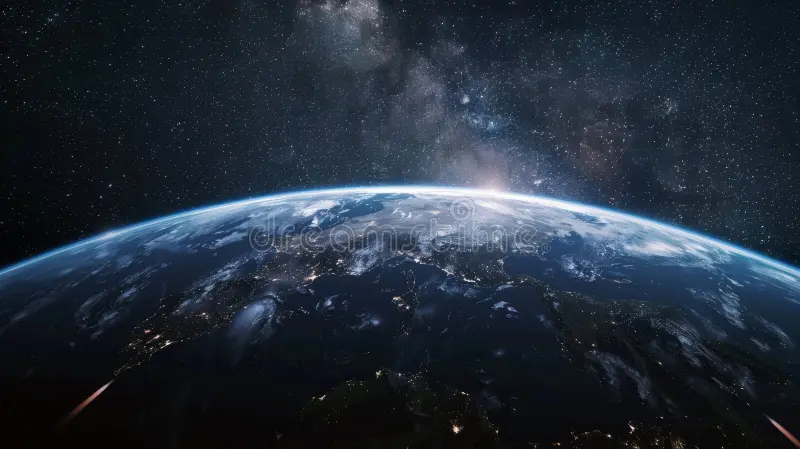The spectacular Earth is a vibrant tapestry woven from countless threads of life, each strand representing a unique ecosystem. From the deepest ocean trenches to the highest mountain peaks, our planet hosts an astonishing diversity of environments, each teeming with life forms exquisitely adapted to their surroundings. Understanding these intricate systems is not merely an academic exercise; it is fundamental to appreciating the delicate balance that sustains life on Earth and to guiding our efforts in conservation and sustainable living.
The Foundation of Life: What is an Ecosystem?
At its core, an ecosystem is a community of living organisms (biotic components) interacting with each other and with their non-living physical environment (abiotic components). These components include elements like sunlight, water, soil, temperature, and atmospheric gases. The interactions within an ecosystem are incredibly complex, involving flows of energy and nutrients that dictate the survival and proliferation of its inhabitants. For instance, producers, typically plants, capture solar energy through photosynthesis, forming the base of the food web. Herbivores consume plants, carnivores consume herbivores, and decomposers break down dead organic matter, returning nutrients to the soil for reuse. This continuous cycle of energy flow and nutrient cycling is the lifeblood of every ecosystem.
Terrestrial Wonders: Exploring Earth’s Land-Based Ecosystems
The Earth’s landmasses are home to a breathtaking array of terrestrial ecosystems, each defined by its climate, geography, and dominant plant and animal life.
Forests: The Lungs of the Planet
Forests are perhaps the most iconic terrestrial ecosystems, covering a significant portion of the Earth’s land surface. They are categorized based on their climate and tree types:
- Tropical Rainforests: Found near the equator, these are biodiversity hotspots, characterized by high rainfall, consistently warm temperatures, and an incredible variety of plant and animal species. The Amazon, Congo, and Southeast Asian rainforests are prime examples, housing an estimated half of the world’s plant and animal species. Their multi-layered canopy creates diverse microhabitats, supporting an unparalleled array of life. The rapid decomposition here also means nutrients are quickly recycled, leading to incredibly fertile yet fragile soils.
- Temperate Forests: Experiencing distinct seasons, these forests shed their leaves in autumn, providing a spectacular display of color. Found in North America, Europe, and Asia, they are home to deciduous trees like oak, maple, and beech, along with a rich understory of shrubs and wildflowers. The wildlife here adapts to seasonal changes, with many animals hibernating or migrating during winter.
- Boreal Forests (Taiga): Stretching across the northern latitudes, these coniferous forests are dominated by pine, spruce, and fir trees. They endure long, cold winters and short, cool summers. Despite the harsh conditions, the taiga supports a surprising diversity of wildlife, including moose, bears, wolves, and numerous bird species. The slow decomposition of needles on the forest floor leads to acidic soils.
Grasslands: Expanses of Green
Grasslands are vast stretches of land dominated by grasses, with few trees or large shrubs. They are found on every continent except Antarctica and vary significantly in climate and rainfall.
- Savannas: These tropical grasslands, like those in Africa, are characterized by scattered trees and shrubs, experiencing distinct wet and dry seasons. They support large herds of grazing animals like zebras, wildebeest, and gazelles, as well as predators such as lions and cheetahs. The presence of fire is a crucial factor in maintaining savannas, preventing the encroachment of forests.
- Temperate Grasslands (Prairies and Steppes): Found in North America, Eurasia, and South America, these grasslands experience hot summers and cold winters. Once home to vast herds of bison and wild horses, much of these areas have been converted to agriculture due to their fertile soils.
Deserts: Resilience in Extremes
Deserts are defined by their aridity, receiving very little rainfall. Despite their harsh conditions, deserts are far from barren. Life here has evolved remarkable adaptations to conserve water and tolerate extreme temperatures. Cacti, succulents, and drought-resistant shrubs are common plant forms, while animals like camels, fennec foxes, and various reptiles have unique physiological and behavioral strategies for survival. The Sahara, Arabian, and Atacama deserts are prime examples of these surprisingly vibrant ecosystems.
Tundra: The Frozen Frontier
The tundra is the coldest of all biomes, characterized by permafrost (permanently frozen ground), low-growing vegetation, and a short growing season. Found in the Arctic and on high mountain peaks (alpine tundra), it supports unique plant life like mosses, lichens, and dwarf shrubs, and animals such as caribou, musk oxen, and polar bears. The fragility of this ecosystem makes it particularly vulnerable to climate change.
Aquatic Realms: The Blue Heart of Our Planet
Water covers over 70% of the Earth’s surface, hosting an equally diverse array of aquatic ecosystems.
Freshwater Ecosystems: Life in Motion and Stillness
These include rivers, lakes, ponds, and wetlands.
- Rivers and Streams: Flowing water environments, they are dynamic systems influenced by current speed, oxygen levels, and surrounding land use. Fish, insects, and amphibians adapted to flowing water thrive here.
- Lakes and Ponds: Still water bodies, they vary greatly in size and depth. Zonation occurs, with different life forms found in the shallow littoral zone, the open-water limnetic zone, and the deep, dark profundal zone.
- Wetlands: Areas saturated with water, such as marshes, swamps, and bogs, are incredibly productive ecosystems. They act as natural filters, improving water quality, and provide crucial habitats for a wide variety of birds, amphibians, and invertebrates.
Marine Ecosystems: The Vast Ocean
The oceans represent the largest and most continuous ecosystem on Earth, playing a critical role in regulating global climate and supporting immense biodiversity.
- Coral Reefs: Often called the “rainforests of the sea,” these vibrant underwater structures are built by tiny polyps and support an astonishing diversity of marine life. They are incredibly sensitive to changes in ocean temperature and acidity.
- Open Ocean (Pelagic Zone): This vast expanse of water is home to microscopic plankton, which form the base of the marine food web, as well as large marine mammals like whales and dolphins, and numerous fish species.
- Deep Sea (Abyssal Zone): Characterized by extreme pressure, perpetual darkness, and cold temperatures, the deep sea is home to bizarre and fascinating creatures that have evolved unique adaptations, often relying on chemosynthesis rather than photosynthesis for energy.
- Estuaries: Where rivers meet the sea, estuaries are dynamic environments with fluctuating salinity levels. They are incredibly productive, serving as nurseries for many fish and shellfish species and providing crucial feeding grounds for migratory birds.
The Interconnectedness of the Spectacular Earth
No ecosystem exists in isolation. The spectacular Earth is a series of interconnected systems. For example, changes in a forest ecosystem can impact the water quality of a nearby river, which in turn affects marine life in an estuary. Climate change, pollution, deforestation, and overfishing are just a few of the human activities that disrupt these delicate balances, with cascading effects across the globe. Understanding these interdependencies is paramount to effective conservation.
Protecting Our Planet’s Unique Ecosystems
The future of the spectacular Earth and all its diverse ecosystems depends on our actions. Conservation efforts must focus on protecting biodiversity, restoring degraded habitats, and promoting sustainable practices. This includes reducing our carbon footprint, minimizing pollution, managing resources responsibly, and supporting policies that prioritize environmental protection. By recognizing the intrinsic value and interconnectedness of our planet’s unique ecosystems, we can work towards a future where both humanity and the natural world can thrive. Embracing the scientific understanding of these systems empowers us to be better stewards of our incredible home.

















